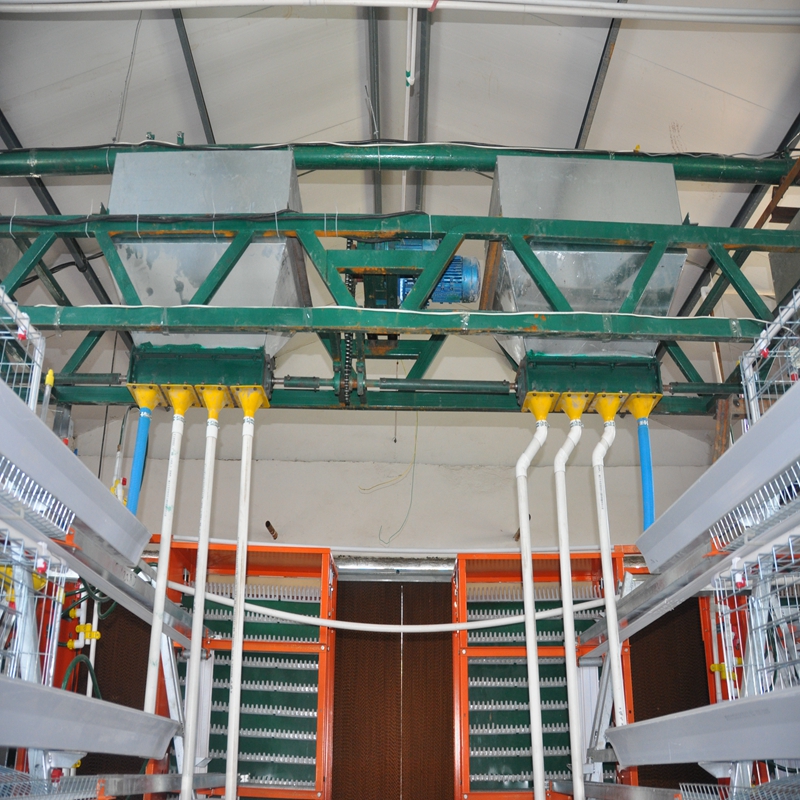layer chicken cages
Sep . 25, 2024 23:05 Back to list
layer chicken cages
The Advantages of Layer Chicken Cages in Poultry Farming
Layer chicken cages have revolutionized poultry farming, bringing about significant improvements in the efficiency and welfare of laying hens. These specially designed housing systems provide numerous advantages for both farmers and the chickens themselves. This article explores the benefits of layer chicken cages and their impact on the modern poultry industry.
Space Efficiency
One of the most significant advantages of layer chicken cages is their space efficiency. Traditional free-range farming methods require large expanses of land, which can be costly and impractical for many farmers. Layer cages, on the other hand, maximize vertical space, allowing farmers to raise more hens in a smaller area. This concentrated farming system not only reduces land use but also makes it easier to manage and monitor the birds.
Improved Egg Production
Layer chicken cages provide an optimal environment for egg-laying hens. The design of these cages allows for better movement and access to feed and water, which in turn leads to improved overall health and higher egg production rates. Studies have shown that hens housed in cages tend to lay more eggs consistently compared to those kept in free-range systems. The controlled environment reduces stress factors that can negatively impact egg production, such as predation or harsh weather conditions.
Enhanced Biosecurity
Biosecurity is a critical concern in poultry farming as it protects flocks from diseases that can devastate populations and cause significant economic losses. Layer chicken cages can improve biosecurity measures significantly. The enclosed system reduces the risk of disease transmission from wild birds and other animals, as the hens are kept separate from external influences. Additionally, these cages can be designed for easy cleaning and disinfection, which is vital for maintaining a healthy flock.
layer chicken cages

Welfare Considerations
While there is an ongoing debate about the welfare implications of cage systems, modern layer chicken cages have evolved to prioritize the comfort of the hens. Many newer cage designs, such as enriched cages, provide more space per bird, nesting areas, and perches. This offers a balance between efficiency and animal welfare, allowing hens to exhibit natural behaviors while still benefiting from the safety and security of a cage environment. It's essential for farmers to choose high-quality cages that meet welfare standards to ensure the health and happiness of their birds.
Economic Benefits
From an economic perspective, the use of layer chicken cages can lead to increased profitability for poultry farmers. Higher egg production rates and lower mortality rates due to improved biosecurity translate to greater financial returns. The initial investment in layer cages may seem significant, but the long-term savings and increased efficiency typically offset these costs. Moreover, a more productive flock allows farmers to meet market demand effectively, enhancing their competitiveness in the industry.
Sustainability
Layer chicken cages can contribute to more sustainable poultry farming practices. By maximizing space and improving feed conversion rates, these systems can lower the overall environmental impact of egg production. Additionally, the ability to control diets more accurately within a cage system can result in more efficient feed use and less waste. This eco-friendly approach aligns with the growing consumer demand for sustainably produced food.
Conclusion
Layer chicken cages offer numerous benefits that make them an attractive option for modern poultry farming. From increased egg production and improved biosecurity to enhanced animal welfare and economic advantages, these systems play a critical role in meeting the demands of today’s consumers. As the poultry industry continues to evolve, embracing technology and innovative practices like layer chicken cages will be essential for sustainable growth and success. Ultimately, the careful integration of these systems can lead to a more efficient, productive, and humane approach to poultry farming.
-
Hot Sale 24 & 18 Door Rabbit Cages - Premium Breeding Solutions
NewsJul.25,2025
-
Automatic Feeding Line System Pan Feeder Nipple Drinker - Anping County Yize Metal Products Co., Ltd.
NewsJul.21,2025
-
Automatic Feeding Line System Pan Feeder Nipple Drinker - Anping County Yize Metal Products Co., Ltd.
NewsJul.21,2025
-
Automatic Feeding Line System - Anping Yize | Precision & Nipple
NewsJul.21,2025
-
Automatic Feeding Line System - Anping Yize | Precision & Nipple
NewsJul.21,2025
-
Automatic Feeding Line System-Anping County Yize Metal Products Co., Ltd.|Efficient Feed Distribution&Customized Animal Farming Solutions
NewsJul.21,2025






